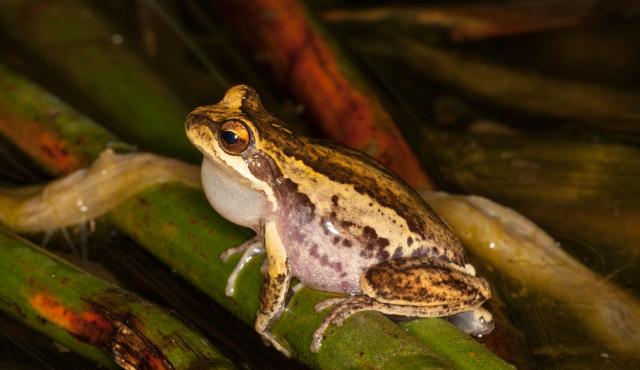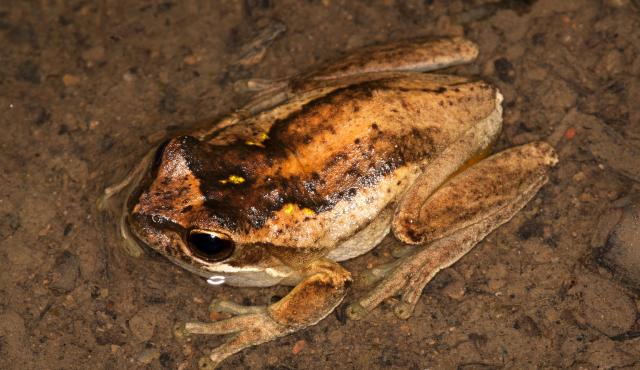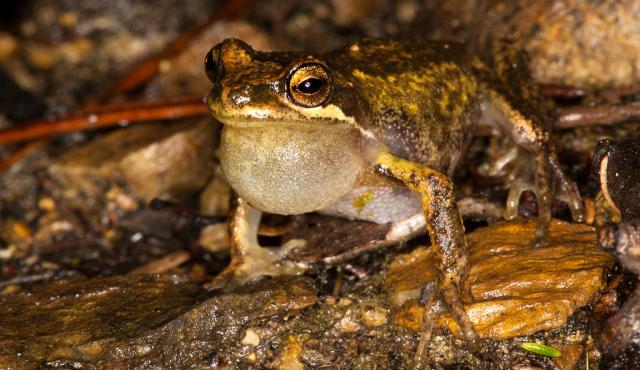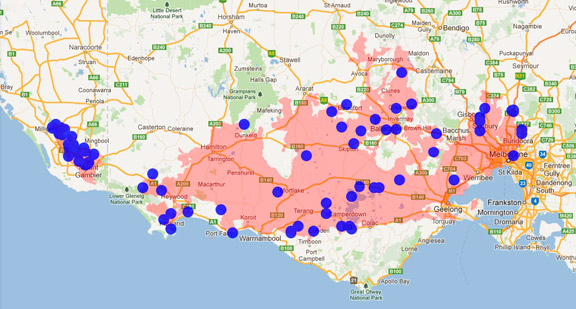A range of teacher professional learning programs will be developed to accompany the Biodiversity of the Western Volcanic Plains online outreach...




Southern Brown Tree Frog
Litoria ewingii
Breeding season: throughout the year, particularly in autumn and spring. Females lay 500-700 pigmented eggs in a jelly mass, usually attached to submerged vegetation.
| Details | Description |
| Type | Amphibian |
| Group | Frog - Tree Frog |
| Other Common Names | Brown Tree Frog, Ewing's Tree Frog |
| Identifying Characteristics | |
| Distinctive Markings | Adults have a smooth light brown dorsal surface with a broad brown patch between the eyes, extending to the vent. A brown/black stripe extends from the nostril to the eye to the arm. A green form is found in in the south-east of South Australia and south-western Victoria. Rounded snout and distinct tympanum. |
| Diet | Carnivore. Adults feed on invertebrates. |
| Habitat | Flooded grasslands or marshes, swamps, roadside drains, farm dams and garden ponds. In dry periods finds shelter in thck vegetation and under logs. |
| Native Status | Native to Australia |
| Sounds | The identifying call is a series of harsh whirring notes "creeee-cree-cree-cree …". |
| Taxonomy | |
| Phylum | Chordata |
| Class | Amphibia |
| Order | Anura |
| Family | Hylidae |
| Genus | Litoria |
| Species | ewingii |

Distribution maps indicate current and historic locations where species have been sighted.
Source: Atlas of Living Australia
| Conservation Status | |
| DEPI Advisory List | Not listed |
| FFG Act | Not listed |
| EPBC Act | Not listed |
The conservation status of species is listed within Victoria and Australia.
The Department of Environment and Primary Industry (DEPI) Advisory List consists of non-statutory advisory lists of rare or threatened flora and fauna within Victoria.
The Flora and Fauna Guarantee Act 1988 (FFG Act) lists threatened species in Victoria. Under the Act, an Action Statement is produced for each listed species.
The Environment Protection and Biodiversity Conservation Act 1999 (EPBC Act) is the Australian Government’s key piece of environmental legislation, listing nationally threatened native species and ecological communities.



